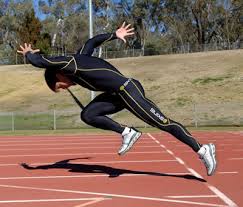Compression Athletic Wear, Worth It?
Whether it’s elite level athletes or recreationalists, compression garments are in style, but is the squeeze on your body worth the squeeze on your wallet?
Whether it’s elite level athletes or recreationalists, compression garments are in style, but is the squeeze on your body worth the squeeze on your wallet? The research says ‘probably yes.’ Graduated compression garments are tighter on the ends farther from your heart and looser on the ends closer to your heart. In some athletic designs, they are tighter over specific muscle groups. This design facilitates circulation in general. It has been used in medical situations such as lower leg edema for years. In athletic wear, the promise is that the garments will reduce fatigue and improve recovery.
The Journal of Strength and Conditioning Research has published a number of well-designed, placebo controlled studies conducted in Australia, Canada, and the U.S. The general consensus is that quality, well-designed graduated compression garments work well. Various studies have found results such as:
- People asked to jump repeatedly showed less fatigue and averaged a higher jump, but the single highest jump did not increase.
- People who biked 40KM two days in a row were 1.2% faster the second day, compared to a group of riders with placebo garments
- Rugby players who worked out two days in a row, ran 3km 2% faster the second day.
- Athletes who wear compression garments report feeling less sore
- 8% greater distance covered in 45 minutes on a treadmill
- Greater tissue oxygenation
- Improvement of joint alignment, range of motion, and proprioception’
Most of the studies support one or more benefits of the compression garments, but not all. Despite the fact that there is an abundance of research on the subject, there may be a need for a bit more research to help determine which products work and which don’t. Some products may not provide enough compression to be effective. Some experts suggest that a compression garment needs to provide at least 18mmHg of pressure to benefit fatigue or recover. Ideally, a compression athletic garment would provide between 20mmHg and 40mmHg of pressure. Unfortunately, many garments do not print the amount of pressure they provide on the labeling. So it is also helpful to know that garments with a higher percentage of spandex typically have more compression.

